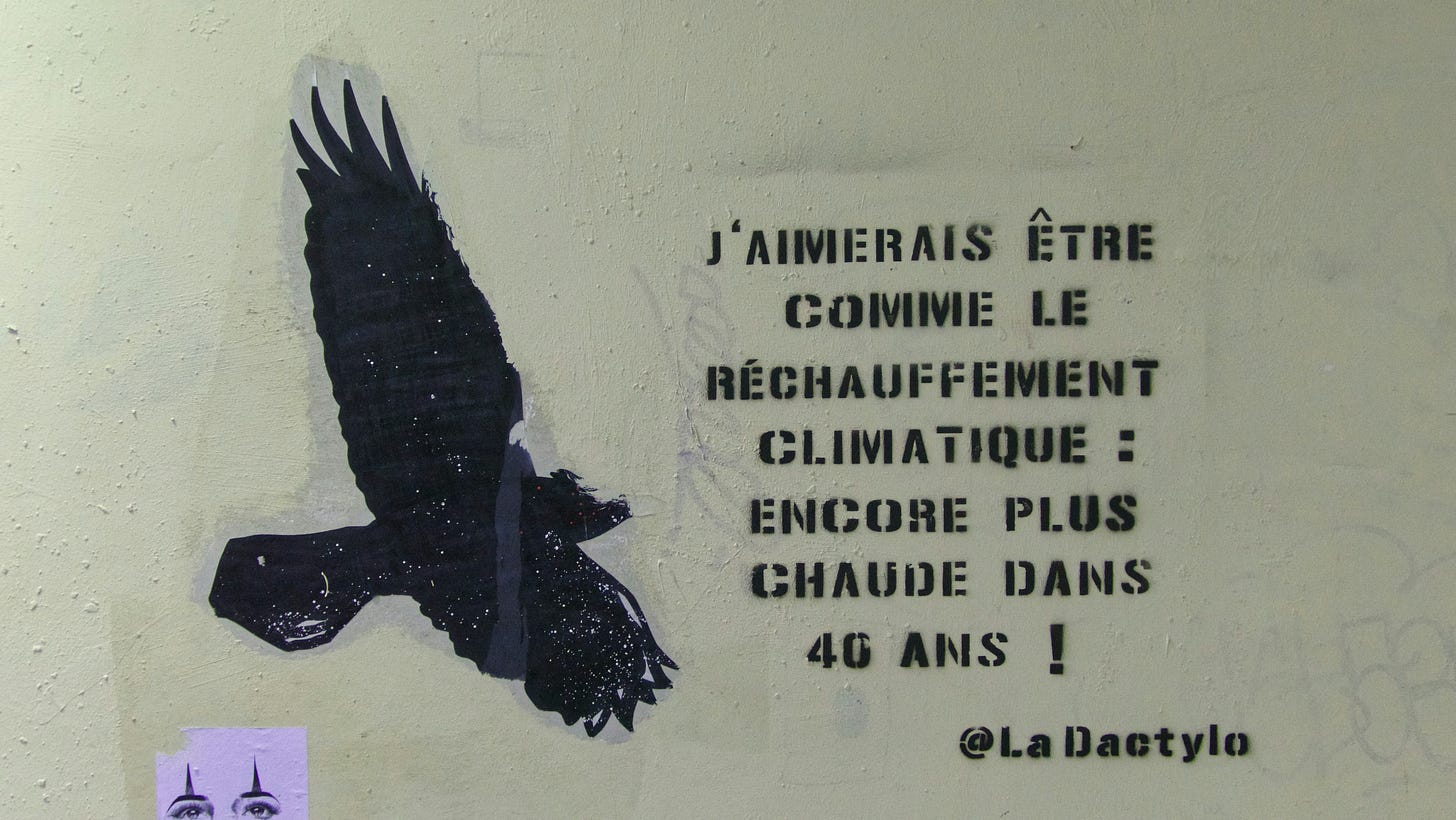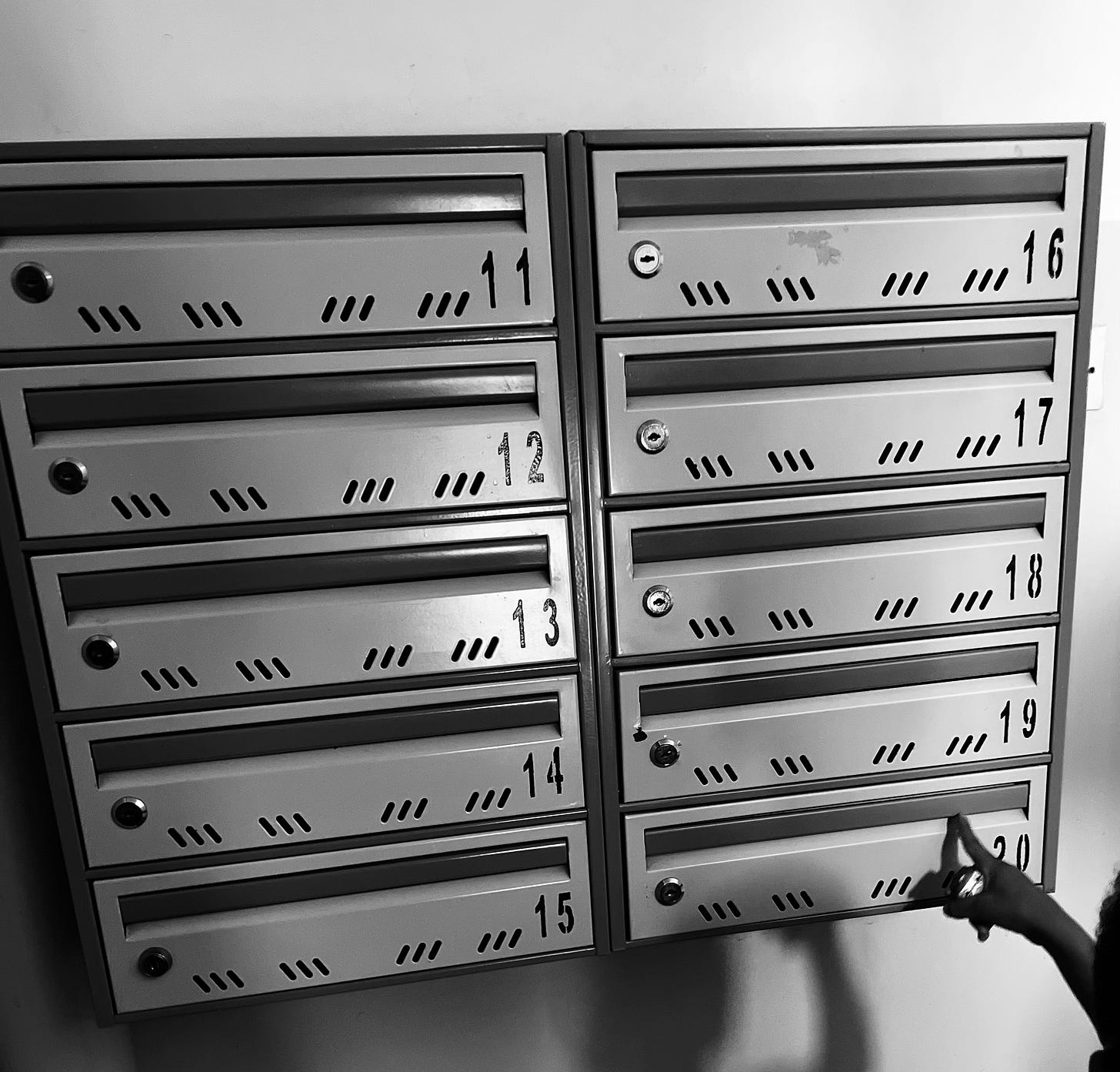Little hand gestures preserve history, emotions and relationships
Every action of your life touches on some chord that will vibrate in eternity.
Picture this: You’re in line at the local post office, waiting to send a letter or postcard. You carefully choose a stamp—deciding between: a national flag, a quote from the Pope, or a flower from a botanical garden. Then, you stand at the side table and lick the stamp to place it on the envelope, ignoring the damp sponge staring back at you, teeming with microbes. You imagine the thrill your friend will feel when the postman on a motorbike delivers the letter—the same thrill you felt just a couple of days ago when you opened your mailbox with the tiny key you keep in the cupboard above the microwave.
That memory, though it doesn’t resurface often, reminds you that life’s magic doesn’t come from abundance, but from the authenticity of experiences and the importance of connections, even if they aren't frequent.
“Sometimes the smallest things take up the most space in your heart.”
That quote from Winnie the Pooh is so true! In life, it’s the little things that play a huge difference, becoming our favourite kind of memories.
In a world where almost all messages are typed and sent electronically, the art of writing letters and cards seems to be forgotten by the majority. Yet, there is a timeless quality in physical letters—a magic that email and text can never quite replicate. Handwritten words on paper carry the weight of thought, effort, and a physical presence that electronic communication tries to imitate.
Some of the most profound and intimate connections in history were captured through letters. Unlike the rapid correspondence we are used to today, letters in the past demanded time, reflection, and the discipline to articulate thoughts without the ease of instant revision, not even to mention the brain connections formed when we handwrite.
Virginia Woolf to Lytton Strachey
In 1909, Virginia Woolf wrote to her friend, fellow writer Lytton Strachey, with an openness that revealed the layers of their bond. Woolf’s letter to Strachey reflected their shared passion for ideas and their intellectual companionship:
"It is almost like being in love, writing to you. One wants to say everything—everything at once, to use up the whole vocabulary before breakfast."
Woolf’s letters often played with the boundaries of friendship and affection, turning words into a kind of warm, playful embrace. Her prose, even in a personal letter, is beautifully crafted and charged with sincerity, highlighting how the art of letter writing allows us to express emotions that might otherwise remain unspoken.
Jack Kerouac to Neal Cassady
In the 1940s, Jack Kerouac and Neal Cassady corresponded with a series of letters that influenced Kerouac's work, particularly his seminal novel, On the Road. One of Kerouac’s letters to Cassady captures his restless spirit:
"I want so much to live—up to the hilt, and on the spur of the moment, and let the chips fall where they may. This is no time for dreams, but a time for action—action! Action!"
Their exchanges were raw, honest, and full of the energy that would later define the Beat Generation, showing how letters could become an art form in their own right, serving as a space to share wild ideas and inspiration.
Emily Dickinson to Susan Gilbert
The letters of Emily Dickinson to her friend and sister-in-law Susan Gilbert reveal a deep, complex friendship that crossed the boundaries of affection and admiration. In one letter, Dickinson wrote:
"Dear Sue—I should like to see you. It is a letter to me, not an image. Words are so strong to love—thine ever Emily."
This letter captures the delicate intensity of a relationship that historians continue to debate. Dickinson's letters to Gilbert were some of the few relationships she truly maintained, and her words, sparse and poetic, echo with longing. These correspondences capture the vulnerability of writing—a moment captured forever inked onto paper.
You, too, might have experiences that changed your life, forming unexpected relationships—like holidays spent with friends in a village that led to a series of letters or a series of graffiti, or that one friend who introduced you to avocados, which you’d never tasted before, and they quickly became a new favourite—smooth, rich, and unexpectedly delightful.

In a world that often moves too quickly, it’s easy to forget how much impact a small gesture can have. Taking the time to write a letter or send a card is a way of slowing down, of pausing amid the rush to truly connect with someone. It’s a way of saying, I’m thinking of you, with more than just words—it's with time, care, and intention.
Sending a handwritten note isn’t about the grandiosity of the gesture; it’s about the thought behind it. A letter or card is a tangible reminder of our connections, a physical piece of the relationship that lasts beyond the moment it’s read. It’s a way of honouring the people who matter to us, showing them that they are seen, remembered, and valued.

In the end, whether it is a small note, letter, card or a short voice message, the magic lies in its ability to make someone feel special and remembered, even from a distance. So the next time you think of someone—a friend you haven't seen in years or someone you see every day—consider writing a note or sending a message. Say a few words, write a few lines, choose a meaningful card, and send it off. It’s not about perfection; it’s about presence.





Omagaa Thank you so much ❤️❤️❤️ this was helpful